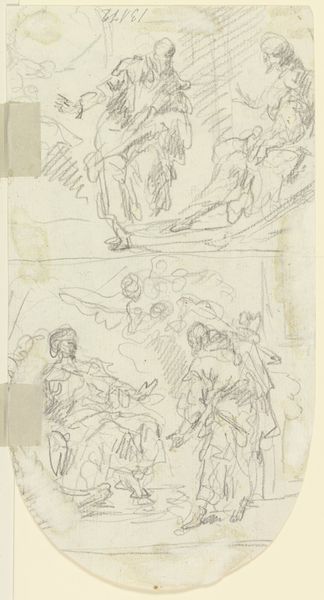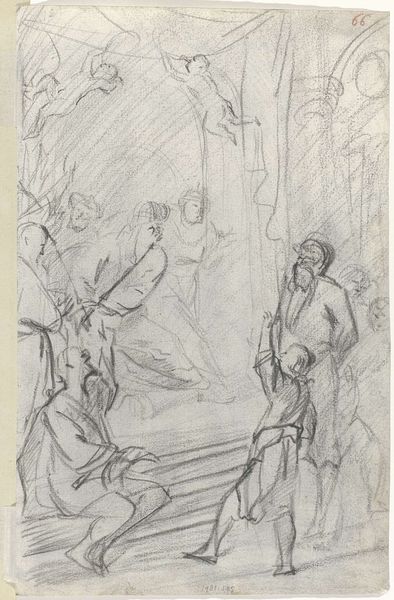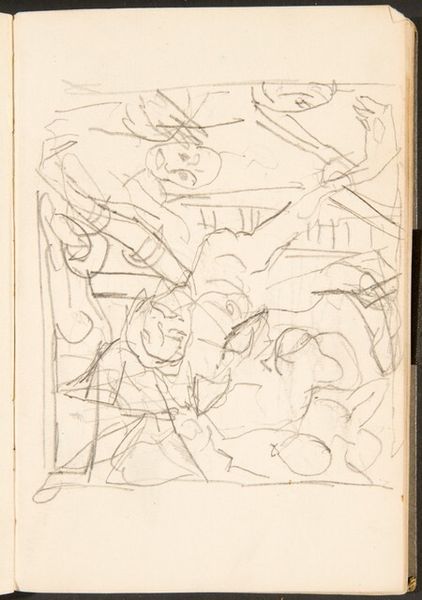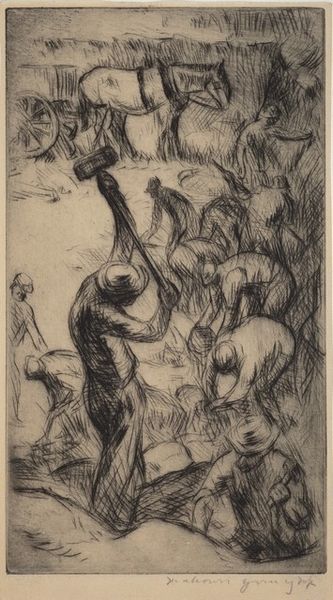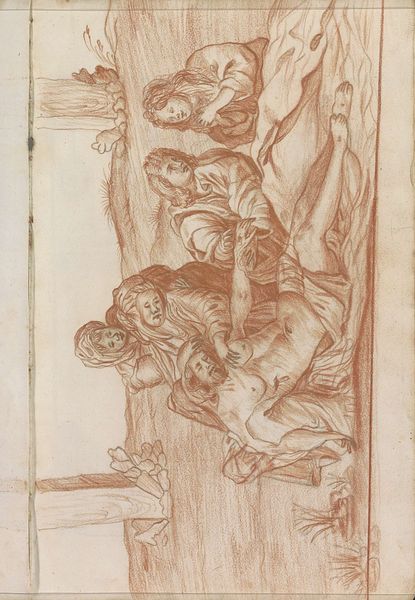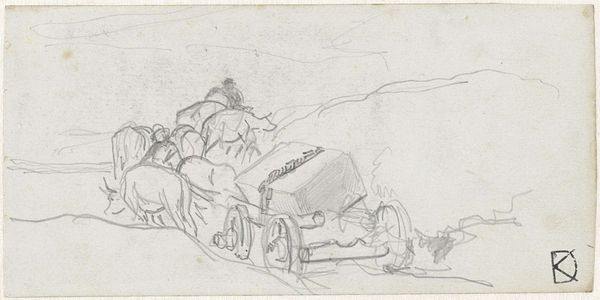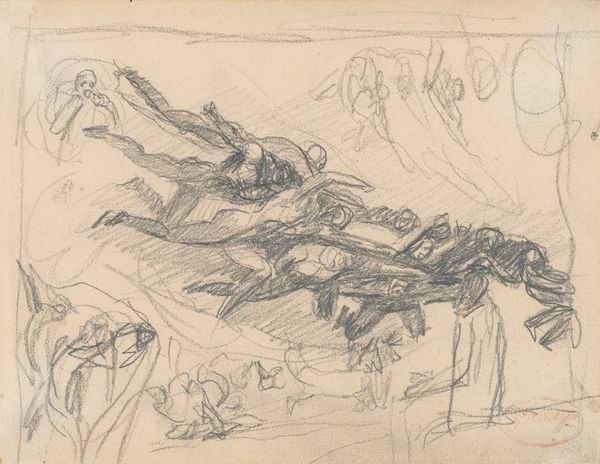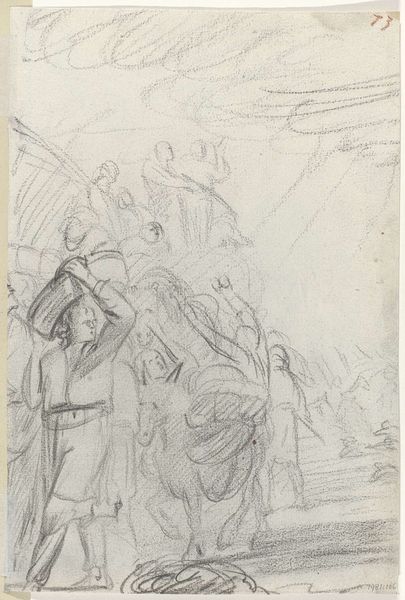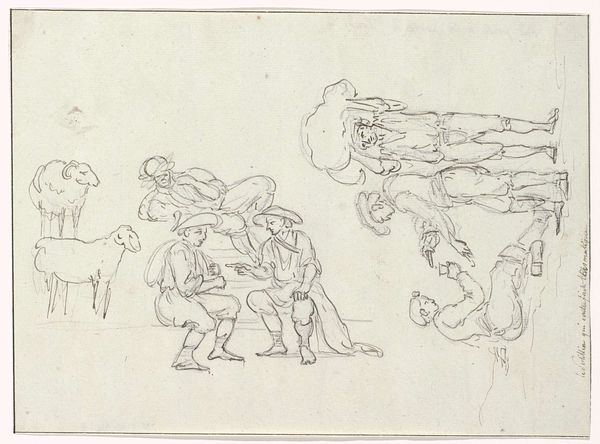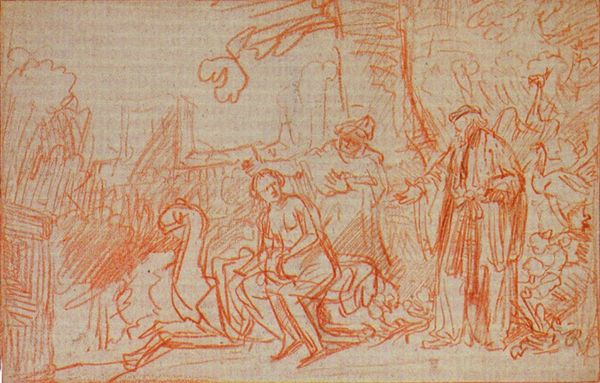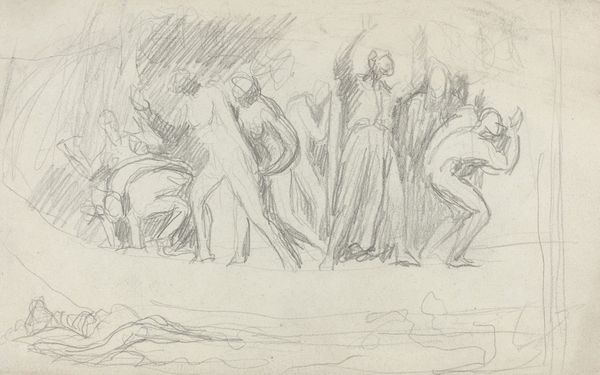
drawing, pencil
#
drawing
#
light pencil work
#
sketch book
#
landscape
#
figuration
#
personal sketchbook
#
idea generation sketch
#
sketchwork
#
pen-ink sketch
#
pencil
#
sketchbook drawing
#
storyboard and sketchbook work
#
sketchbook art
#
initial sketch
Copyright: Public Domain: Artvee
Editor: This is a pencil drawing by Pierre Puvis de Chavannes from the 19th century, titled "Figures Unloading Cargo from Sailing Vessels." It feels very preliminary, like an idea still in development. What strikes you about this sketch? Curator: What resonates for me are the recurring visual motifs – the collective labor, the human form intertwined with the sea. Consider how many cultures across time have mythologized the sea as a site of both bounty and peril, a womb and a grave. Do you see echoes of that duality here? Editor: I do see it now that you mention it! The figures almost seem to be emerging from the sea as much as unloading from the boats. They appear both burdened and vital. Is this common in de Chavannes’ work? Curator: Very much so. He was preoccupied with depicting labor as a source of communal identity. Notice how the figures, while individual, are also somewhat anonymous. Their actions define them more than their faces. He's using the classical idea of idealized labor, connecting to generations of symbolic representation. Do the poses remind you of anything? Editor: There's a sense of classical sculpture to some of the figures, perhaps? It's like he's studying ancient forms but putting them in a more contemporary setting. Curator: Exactly. And what emotional impact does this blending of old and new create, do you think? Is it a sense of timelessness, perhaps, or something else? Editor: I think there’s also a kind of universality in portraying the figures as almost nude and anonymous in their labor. It shows this act of labor isn’t particular to anyone or any specific place. It makes you think about the layers of meaning embedded in even the simplest of scenes. Curator: Indeed. It’s a reminder that images are rarely just what they seem, and that understanding their symbolic language enriches our experience.
Comments
No comments
Be the first to comment and join the conversation on the ultimate creative platform.
